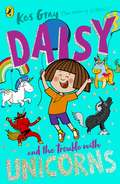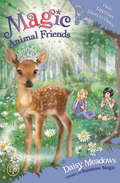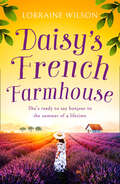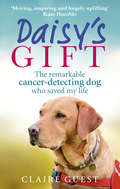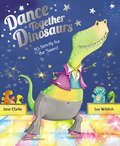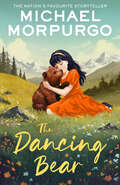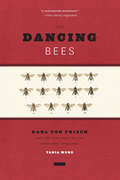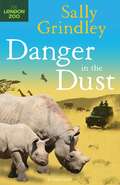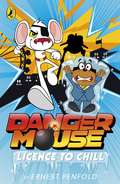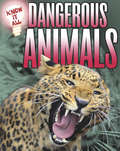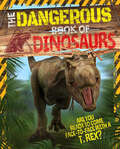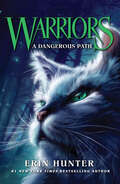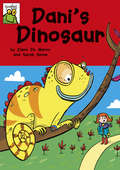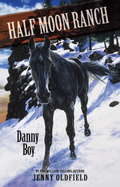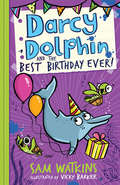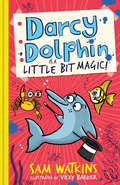- Table View
- List View
Daisy and the Trouble With Unicorns (Daisy Fiction)
by Kes GrayThe BRAND NEW laugh-out-loud Daisy adventure for readers of 6-9, from bestselling author of the Oi Frog series, Kes Gray.Here comes trouble!It's Gabby's birthday and Daisy is the GUEST OF HONOUR at her party!!!What's even more exciting is that Gabby has been given TWO TOY UNICORNS for her birthday.They're so sparkly and soft and fluffy and cuddly!!!Trouble is, these unicorns are also MAGIC - and very chatty. And they're giving Daisy all sorts of troublesome ideas...
Daisy Tappytoes Dares to Dance: Book 30 (Magic Animal Friends #30)
by Daisy MeadowsAn enchanting series full of adorable animals, magic and friendship - from the creator of RAINBOW MAGIC, the UK's bestselling series for girls aged 5-7.Best friends Lily and Jess are excited to be going to a musical show in Friendship Forest! But when they get there, the wicked witch Grizelda puts a curse on the place, knocking everything out of sync. Can adorable fawn Daisy Tappytoes help Friendship Forest regain its rhythm?
Daisy’s French Farmhouse (A French Escape #4)
by Lorraine Wilson*Preorder the next book in this heartwarming series set in beautiful France!*
Daisy’s Gift: The remarkable cancer-detecting dog who saved my life
by Claire GuestClaire Guest was walking her dogs when Daisy, a fox red Labrador, nudged her breast insistently and stared up into her face with her big brown eyes. Sensing something was wrong, Claire visited her GP and soon found out she had a very deep – and difficult to diagnose – form of breast cancer. Daisy had saved her life, simply by smelling her cancer.With her scientific background and deep love of dogs, Claire intuited that Daisy and her canine pals could save many more lives, and set up the charity Medical Detection Dogs. Though faced with many challenges, Claire and her dogs have proven to be a remarkable asset to cancer detection, and have changed the lives of many seriously ill people and their families.This is the story of how our relationship with dogs can unleash life-saving talents, changing not only the medical world, but our own lives too.
Dance Together Dinosaurs
by Jane ClarkeThis fantastic rhyming romp is a magical mix of dinosaurs and dancing competitions. Each type of dinosaur has its own dance style, from tapping raptors to body popping triceratops.But why do the judges keep disappearing?The funky artwork is packed with crazy colours and deliciously funny outfits.Come on! Dance with the dinosaurs. You could be a winner.It's tons of fun for everyone, until it's time for ...
The Dancing Bear
by Michael MorpurgoDiscover the beautiful stories of Michael Morpurgo, author of Warhorse and the nation’s favourite storyteller A gentle and deeply moving story of a young girl and her bear, told with great charm by a master storyteller.
The Dancing Bees: Karl von Frisch and the Discovery of the Honeybee Language
by Tania MunzWe think of bees as being among the busiest workers in the garden, admiring them for their productivity. But amid their buzzing, they are also great communicators—and unusual dancers. As Karl von Frisch (1886–1982) discovered during World War II, bees communicate the location of food sources to each other through complex circle and waggle dances. For centuries, beekeepers had observed these curious movements in hives, and others had speculated about the possibility of a bee language used to manage the work of the hive. But it took von Frisch to determine that the bees’ dances communicated precise information about the distance and direction of food sources. As Tania Munz shows in this exploration of von Frisch’s life and research, this important discovery came amid the tense circumstances of the Third Reich. The Dancing Bees draws on previously unexplored archival sources in order to reveal von Frisch’s full story, including how the Nazi government in 1940 determined that he was one-quarter Jewish, revoked his teaching privileges, and sought to prevent him from working altogether until circumstances intervened. In the 1940s, bee populations throughout Europe were facing the devastating effects of a plague (just as they are today), and because the bees were essential to the pollination of crops, von Frisch’s research was deemed critical to maintaining the food supply of a nation at war. The bees, as von Frisch put it years later, saved his life. Munz not only explores von Frisch’s complicated career in the Third Reich, she looks closely at the legacy of his work and the later debates about the significance of the bee language and the science of animal communication. This first in-depth biography of von Frisch paints a complex and nuanced portrait of a scientist at work under Nazi rule. The Dancing Bees will be welcomed by anyone seeking to better understand not only this chapter of the history of science but also the peculiar waggles of our garden visitors.
The Dancing Bees: Karl von Frisch and the Discovery of the Honeybee Language
by Tania MunzWe think of bees as being among the busiest workers in the garden, admiring them for their productivity. But amid their buzzing, they are also great communicators—and unusual dancers. As Karl von Frisch (1886–1982) discovered during World War II, bees communicate the location of food sources to each other through complex circle and waggle dances. For centuries, beekeepers had observed these curious movements in hives, and others had speculated about the possibility of a bee language used to manage the work of the hive. But it took von Frisch to determine that the bees’ dances communicated precise information about the distance and direction of food sources. As Tania Munz shows in this exploration of von Frisch’s life and research, this important discovery came amid the tense circumstances of the Third Reich. The Dancing Bees draws on previously unexplored archival sources in order to reveal von Frisch’s full story, including how the Nazi government in 1940 determined that he was one-quarter Jewish, revoked his teaching privileges, and sought to prevent him from working altogether until circumstances intervened. In the 1940s, bee populations throughout Europe were facing the devastating effects of a plague (just as they are today), and because the bees were essential to the pollination of crops, von Frisch’s research was deemed critical to maintaining the food supply of a nation at war. The bees, as von Frisch put it years later, saved his life. Munz not only explores von Frisch’s complicated career in the Third Reich, she looks closely at the legacy of his work and the later debates about the significance of the bee language and the science of animal communication. This first in-depth biography of von Frisch paints a complex and nuanced portrait of a scientist at work under Nazi rule. The Dancing Bees will be welcomed by anyone seeking to better understand not only this chapter of the history of science but also the peculiar waggles of our garden visitors.
The Dancing Bees: Karl von Frisch and the Discovery of the Honeybee Language
by Tania MunzWe think of bees as being among the busiest workers in the garden, admiring them for their productivity. But amid their buzzing, they are also great communicators—and unusual dancers. As Karl von Frisch (1886–1982) discovered during World War II, bees communicate the location of food sources to each other through complex circle and waggle dances. For centuries, beekeepers had observed these curious movements in hives, and others had speculated about the possibility of a bee language used to manage the work of the hive. But it took von Frisch to determine that the bees’ dances communicated precise information about the distance and direction of food sources. As Tania Munz shows in this exploration of von Frisch’s life and research, this important discovery came amid the tense circumstances of the Third Reich. The Dancing Bees draws on previously unexplored archival sources in order to reveal von Frisch’s full story, including how the Nazi government in 1940 determined that he was one-quarter Jewish, revoked his teaching privileges, and sought to prevent him from working altogether until circumstances intervened. In the 1940s, bee populations throughout Europe were facing the devastating effects of a plague (just as they are today), and because the bees were essential to the pollination of crops, von Frisch’s research was deemed critical to maintaining the food supply of a nation at war. The bees, as von Frisch put it years later, saved his life. Munz not only explores von Frisch’s complicated career in the Third Reich, she looks closely at the legacy of his work and the later debates about the significance of the bee language and the science of animal communication. This first in-depth biography of von Frisch paints a complex and nuanced portrait of a scientist at work under Nazi rule. The Dancing Bees will be welcomed by anyone seeking to better understand not only this chapter of the history of science but also the peculiar waggles of our garden visitors.
The Dancing Bees: Karl von Frisch and the Discovery of the Honeybee Language
by Tania MunzWe think of bees as being among the busiest workers in the garden, admiring them for their productivity. But amid their buzzing, they are also great communicators—and unusual dancers. As Karl von Frisch (1886–1982) discovered during World War II, bees communicate the location of food sources to each other through complex circle and waggle dances. For centuries, beekeepers had observed these curious movements in hives, and others had speculated about the possibility of a bee language used to manage the work of the hive. But it took von Frisch to determine that the bees’ dances communicated precise information about the distance and direction of food sources. As Tania Munz shows in this exploration of von Frisch’s life and research, this important discovery came amid the tense circumstances of the Third Reich. The Dancing Bees draws on previously unexplored archival sources in order to reveal von Frisch’s full story, including how the Nazi government in 1940 determined that he was one-quarter Jewish, revoked his teaching privileges, and sought to prevent him from working altogether until circumstances intervened. In the 1940s, bee populations throughout Europe were facing the devastating effects of a plague (just as they are today), and because the bees were essential to the pollination of crops, von Frisch’s research was deemed critical to maintaining the food supply of a nation at war. The bees, as von Frisch put it years later, saved his life. Munz not only explores von Frisch’s complicated career in the Third Reich, she looks closely at the legacy of his work and the later debates about the significance of the bee language and the science of animal communication. This first in-depth biography of von Frisch paints a complex and nuanced portrait of a scientist at work under Nazi rule. The Dancing Bees will be welcomed by anyone seeking to better understand not only this chapter of the history of science but also the peculiar waggles of our garden visitors.
The Dancing Bees: Karl von Frisch and the Discovery of the Honeybee Language
by Tania MunzWe think of bees as being among the busiest workers in the garden, admiring them for their productivity. But amid their buzzing, they are also great communicators—and unusual dancers. As Karl von Frisch (1886–1982) discovered during World War II, bees communicate the location of food sources to each other through complex circle and waggle dances. For centuries, beekeepers had observed these curious movements in hives, and others had speculated about the possibility of a bee language used to manage the work of the hive. But it took von Frisch to determine that the bees’ dances communicated precise information about the distance and direction of food sources. As Tania Munz shows in this exploration of von Frisch’s life and research, this important discovery came amid the tense circumstances of the Third Reich. The Dancing Bees draws on previously unexplored archival sources in order to reveal von Frisch’s full story, including how the Nazi government in 1940 determined that he was one-quarter Jewish, revoked his teaching privileges, and sought to prevent him from working altogether until circumstances intervened. In the 1940s, bee populations throughout Europe were facing the devastating effects of a plague (just as they are today), and because the bees were essential to the pollination of crops, von Frisch’s research was deemed critical to maintaining the food supply of a nation at war. The bees, as von Frisch put it years later, saved his life. Munz not only explores von Frisch’s complicated career in the Third Reich, she looks closely at the legacy of his work and the later debates about the significance of the bee language and the science of animal communication. This first in-depth biography of von Frisch paints a complex and nuanced portrait of a scientist at work under Nazi rule. The Dancing Bees will be welcomed by anyone seeking to better understand not only this chapter of the history of science but also the peculiar waggles of our garden visitors.
The Dancing Bees: Karl von Frisch and the Discovery of the Honeybee Language
by Tania MunzWe think of bees as being among the busiest workers in the garden, admiring them for their productivity. But amid their buzzing, they are also great communicators—and unusual dancers. As Karl von Frisch (1886–1982) discovered during World War II, bees communicate the location of food sources to each other through complex circle and waggle dances. For centuries, beekeepers had observed these curious movements in hives, and others had speculated about the possibility of a bee language used to manage the work of the hive. But it took von Frisch to determine that the bees’ dances communicated precise information about the distance and direction of food sources. As Tania Munz shows in this exploration of von Frisch’s life and research, this important discovery came amid the tense circumstances of the Third Reich. The Dancing Bees draws on previously unexplored archival sources in order to reveal von Frisch’s full story, including how the Nazi government in 1940 determined that he was one-quarter Jewish, revoked his teaching privileges, and sought to prevent him from working altogether until circumstances intervened. In the 1940s, bee populations throughout Europe were facing the devastating effects of a plague (just as they are today), and because the bees were essential to the pollination of crops, von Frisch’s research was deemed critical to maintaining the food supply of a nation at war. The bees, as von Frisch put it years later, saved his life. Munz not only explores von Frisch’s complicated career in the Third Reich, she looks closely at the legacy of his work and the later debates about the significance of the bee language and the science of animal communication. This first in-depth biography of von Frisch paints a complex and nuanced portrait of a scientist at work under Nazi rule. The Dancing Bees will be welcomed by anyone seeking to better understand not only this chapter of the history of science but also the peculiar waggles of our garden visitors.
Dancing with Bees: A Journey Back to Nature
by Brigit Strawbridge HowardA naturalist’s passionate dive into the world of bees of all stripes--what she has learned about them, and what we can learn from them Brigit Strawbridge Howard was shocked the day she realised she knew more about the French Revolution than she did about her native trees. And birds. And wildflowers. And bees. The thought stopped her—quite literally—in her tracks. But that day was also the start of a journey, one filled with silver birches and hairy-footed flower bees, skylarks, and rosebay willow herb, and the joy that comes with deepening one’s relationship with place. Dancing with Bees is Strawbridge Howard’s charming and eloquent account of a return to noticing, to rediscovering a perspective on the world that had somehow been lost to her for decades and to reconnecting with the natural world. With special care and attention to the plight of pollinators, including honeybees, bumblebees, and solitary bees, and what we can do to help them, Strawbridge Howard shares fascinating details of the lives of flora and fauna that have filled her days with ever-increasing wonder and delight.
Danger in the Dust
by Sally GrindleyTwo children accompany their parents as they travel the world helping animals on the verge of extinction. As their parents work alongside international agencies, the children have their own thrilling adventures.In Danger in the Dust, Joe, his sister, Aesha, and their parents go on a trip to Kenya, where they hope to see the Big Five in the wild. It's the experience of a lifetime, and it's all leading up to an exhilarating mission to release a magnificent black rhino back into the wild – until their safari van gets stuck and they find themselves in desperate need of rescue . . .This exciting story is written with the assistance and guidance of London Zoo's conservation team. All information is accurate.Sally Grindley is the author of bestselling and award-winning fiction for young readers. Here she brings to life a story of how humans and wildlife can live side by side, set in Kenya.
Danger Mouse: Case Files Fiction Book 1 (Danger Mouse)
by Ernest PenfoldDanger Mouse is the world's best secret agent. He's the greatest. He's fantastic.Then there's Penfold. He's . . . well, he's not much to look at, but he's got a book deal, so that's something.This hair-raising chapter book is Penfold's own account of one of Danger Mouse's most perilous missions. Featuring the villainous Baron Greenback and his second-rate sidekicks, this hilarious adventure is filled with mishaps, mayhem and, most of all, DANGER.
Dangerous Animals (Know It All #8)
by James NixonImpress your friends (and yourself) with just how much you know about dangerous animals! Loads of facts and stats will bring the world of deadly creatures to life - from venemous snakes and spiders to wild dogs, bears and man-eating sharks - this book will ensure you really do Know It All.Part of the series Know It All - there are eight books in this series covering everything from Cars and Knights to Inventions and Dangerous Animals.
The Dangerous Book of Dinosaurs: Are You Ready to Come Face-to-Face with a T-Rex?
by Liz MilesFind out everything you need to know about dinosaurs in this action-packed guide to prehistoric life. Bursting with fantastic facts, punchy statistics and eye-catching images, this book provides a thrilling and comprehensive introduction to dinosaurs for kids aged 7+.
A Dangerous Path (Warriors #5)
by Erin HunterTravel back into the rich feline fantasy world of the Warrior Cats in the fifth book series! Battles for honour and territory continue as Fireheart takes over the ThunderClan in this dramatic adventure.
The Dangerous Snakes of Africa: Natural History, Species Directory, Venoms And Snakebite
by Steve Spawls Bill BranchAfrica is a true hotspot for snake diversity, with several hundred species. Unfortunately, a scared snake or one that is trodden on may bite, and some species have venom that can prove fatal. The Dangerous Snakes of Africa is an indispensable guide to these reptiles. It covers all 137 dangerous snake species in Africa, along with another 70 species that are easily confused with them. All are described, with each account looking in detail at their identification, habitat and distribution, behaviour and venom, as well as how to treat bites and a selection of photographs, accompanied by an accurate range map. Introductory sections cover the major snake groups, their venom characteristics, how to avoid snake bites and first-aid advice. This comprehensive book is an essential tool for all naturalists, conservationists, educators, field workers and medical personnel throughout Africa.
The Dangerous Snakes of Africa
by Steve Spawls Bill BranchAfrica is a true hotspot for snake diversity, with several hundred species. Unfortunately, a scared snake or one that is trodden on may bite, and some species have venom that can prove fatal. The Dangerous Snakes of Africa is an indispensable guide to these reptiles. It covers all 137 dangerous snake species in Africa, along with another 70 species that are easily confused with them. All are described, with each account looking in detail at their identification, habitat and distribution, behaviour and venom, as well as how to treat bites and a selection of photographs, accompanied by an accurate range map. Introductory sections cover the major snake groups, their venom characteristics, how to avoid snake bites and first-aid advice. This comprehensive book is an essential tool for all naturalists, conservationists, educators, field workers and medical personnel throughout Africa.
Dani's Dinosaur: Dani's Dinosaur Froglets: Dani's Dinosaur (Froglets #3)
by Clare De MarcoDani's Dinosaur is a funny story for young lizard and pet fans who are learning to read on their own. Perfect for children aged 5-7 who are reading at book band green.When Dani finds a dinosaur in her garden, she and her mum are very surprised. Whatever can it be? And can it help Mum with the gardening?The Froglets series is perfect for children who are reading on their own, with fun stories of no more than 200 words and puzzles to encourage retelling the story and to help build vocabulary. Compiled in consultation with Catherine Glavina, PGCE and Primary Leader, The Centre for Professional Education, University of Warwick.
Danny Boy: Book 9 (Horses of Half Moon Ranch #No. 9)
by Jenny OldfieldDanny Boy is an energetic black colt, new to the ranch. Out on the trail, a guest's poor judgement brings Danny down. Trapped on a ledge, there's no way of reaching him - until Kirstie remembers some disused silver mine workings. Could an old site plan help her to carry out a daring rescue?
Darcy Dolphin and the Best Birthday Ever! (Darcy Dolphin #3)
by Sam WatkinsClarice Bean meets Finding Dory in this laugh-out-loud diary set under the sea!
Darcy Dolphin is a Little Bit Magic! (Darcy Dolphin #2)
by Sam WatkinsClarice Bean meets Finding Dory in this laugh-out-loud diary set under the sea!
